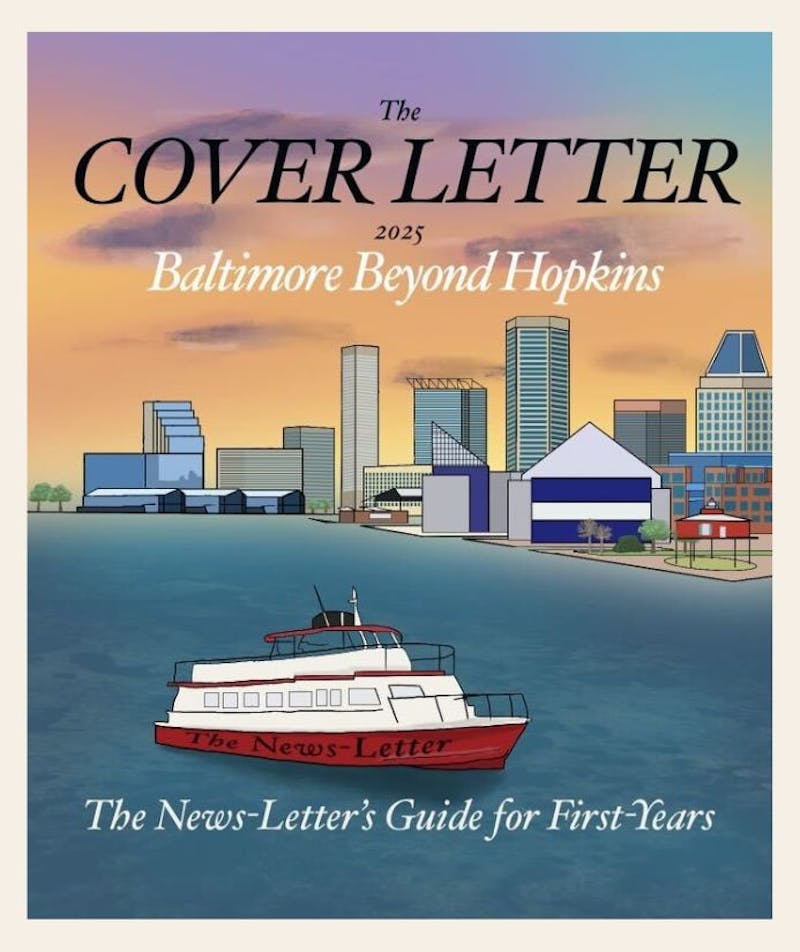Watching the Johns Hopkins University Theatre's Boy Meets Girl, playwrights Bella and Sam Spewack's homage to the early days of the movie business, you get the impression that behind the scenes, Hollywood's Golden Age was part Shakespearean court of intrigue, part Saturday morning cartoon. The piece was first staged in the midst of the Great Depression, but you would probably never notice. Escapist antics abound, while the worst that happens is the kind of back-lot backstabbing that, if the script is to be believed, was a matter of routine among studio regulars.
Somewhere in the plotline of Boy Meets Girl, directed by James Glossman, is the soothingly formulaic love story that its title describes, a story that is engulfed by the play's wave of wholesale insanity. Handling a somewhat dated silver screen bonanza can't be all that easy, even for cast as talented as the one the Theatre has assembled, but Boy Meets Girl is still a lot of fun. But it also makes you suppose that in bringing a comedy which moves at breakneck speed to the intimate space of the Merrick Barn, Hopkins Theatre has gone a little overboard.
Almost every minute of Boy Meets Girl takes place inside the business offices of the conveniently imaginary Royal Studios picture company -- a world brought to life by a supremely typecast troupe. Here we find a menagerie of competing egos: malingering, eccentric screenwriters Bobbie Law (sophomore Liz Gilbert) and L. Carlyle Benson (instructor John Astin), short-fused executive C.E. Friday (sophomore Anthony Blaha), and none-too-bright cowboy actor Larry Toms (instructor Loren Dunn). In Boy Meets Girl, power grabs, inane arguments, and midget actor revolts are all nothing less than business as usual.
But when Benson and Law befriend Susie (junior Elspeth Kursh), a pregnant company maid, the duo sees a chance to turn her baby into a movie star, and in doing so, save their own ailing careers. After Susie's child -- named, in one of the show's most ridiculous touches, Happy -- becomes a big-screen sensation, everyone, including Larry and his conniving manager (senior Anjana Muralidharan), tries to get a piece of the profit. Yet, even as the world around her explodes, Susie finds herself falling in love with a studio extra, Rodney (sophomore James Zwerneman). He's a nice enough fellow, an articulate Englishman who unwittingly places himself at the middle of another of Benson and Law's shameless self-aggrandizement schemes.
There's a lot more story where that came from. However, one of the best parts of watching Boy Meets Girl is discovering how its eclectic elements are all drawn together. What threaten at first to be painfully underdeveloped characters hit, especially in the closing scenes, enough emotions to emerge as real, though demented people.
Keeping an unexpected center in this storm is Astin, whose Benson, beleaguered by a spendthrift wife, is an odd combination of playfulness and gravitas. He's a fine match for Gilbert's attention-grabbing Law, a manic concoction of intellectual pretensions and artistic ramblings. The two dominate their scenes, despite worthy caricatures from Dunn, Blaha, and Zwerneman, not to mention riotously maudlin acting from Kursh. In this brash Hollywood, her Susie, whose life is often one long, sweet daydream, is the sole example of purity.
Boy Meets Girl bombards you so hard with gags and sight tricks that you probably won't have time to reflect on all this. With a presentation neither direct enough for Three Stooges-type mischief, nor deliberate enough for Monty Pythonesque absurdity, the play comes off more as amusing than flagrantly hilarious. Unfortunately, it is usually the one-liners, not Boy Meets Girl's specialized gimmicks, which pull the biggest laughs.
Despite an occasional awkwardness, the whole production smacks of professionalism. Though modest, the staging gives each character plenty of room to let his or her quirks reign free. Completing the set are nice touches like a period radio and a mountain backdrop, adorned with white block letters that read, quite appropriately, "Hollywoodland." It only breaks the charm of the whole atmosphere when, on the play's last legs, the actors take their dialogue into the aisles -- setting off the kind of neck-craning nightmare that makes you feel lucky to be sitting in the back rows.
These touches, however, also help to remind us that Boy Meets Girl is a relic of its times. In writing Boy Meets Girl, the Spewacks not only romanticized the film industry, they also created a formidable vaudevillian spectacle. But even here, the husband and wife that brought us such period classics as Kiss Me Kate and A Star Is Born were careful to give their work enough satiric relevance to be valuable later on.
In the middle of all its lunacy, some of Boy Meets Girl's finer moments, especially an earlier, pivotal meeting between Susie and Rodney, are completely demolished. Instead of lingering insight, you get a rollercoaster ride of a comedy that takes a measure of reorientation to appreciate. After it opened in 1935 on Broadway, Boy Meets Girl played over 300 performances. The members of the Johns Hopkins University Theatre clearly don't have the time for that kind of run. But after seeing Boy Meets Girl's rapid-fire antics only once, I'm starting to doubt that anyone would have the energy.


